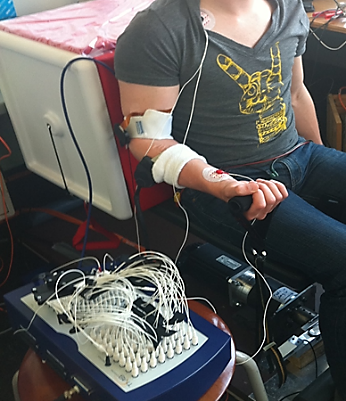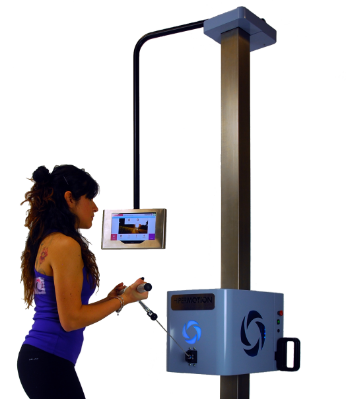
The neuromuscular system is generally intended as the combination of the nervous and muscular systems, working together to enable movement. Characterization of the neuromuscular system is carried out through extensive use of electromyography (EMG), i.e., the analysis of muscle biopotentials obtained non-invasively by using electrodes on the skin.
At the BM/d Lab, we work on advanced algorithms for the extraction of EMG features that carry relevant physiological information on the neuromuscular activity. Within the neuromuscular context, the BM/d Lab works toward different applications. We investigate the non-linear model that describes the relationship between force and EMG during fatiguing tasks with the aim of estimating muscle force during dynamic movements. EMG analysis beyond skeletal muscles is also of interest. In this respect, diaphragmatic EMG is analyzed to non-obtrusively assess the respiratory effort, with potential application in sleep apnea and mechanical ventilation.

Part of our work focuses on involuntary neuromuscular mechanisms to improve the efficiency of muscle training and rehabilitation programs. Vibrating loads are applied to the muscle and the underlying neuromuscular adaptation processes are studied with the aim of optimizing the imposed loads. The electromechanical effect of fatigue due to a vibration- based exercise is studied through a multimodal investigation based on EMG, ultrasound (US) and near infrared spectroscopy (NIRS). Transcutaneous electrical neural stimulation (TENS) is also employed to assess the impact of high-frequency mechanical stimulation on Hoffmann鈥檚 reflex (known as H-reflex). Dedicated setups and high-end equipment from the startup HiPerMotion are available for controlled application of vibrating loads, and acquisition of EMG, NIRS and US data.
Neuromuscular research is carried out in collaboration with the a number of strategic clinical partners, comprising the in Veldhoven, the in Heeze, La Sapienza University of Rome, and the Aspire Academy (Quatar).